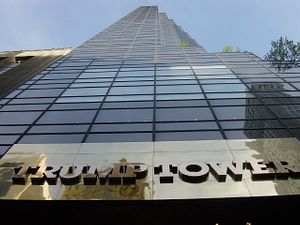We don’t yet have a full sense of how the Trump administration will manage intellectual property disputes with China, but we do know that Trump just won a big IP victory for himself. After years of effort, Trump managed to acquire a trademark for building construction services, after China’s trademark office invalidated the claim of an acknowledged squatter. Dozens of other trademarks claimed by Trump remain in dispute, and could also come under his control in the near future.
There are unquestionably serious conflict of interest issues associated with Trump’s recovery of his trademark rights in China. The trademark cases give the Chinese government an almost unique ability to signal approval or disapproval of Trump; by fiat, the Trademark Office can determine the financial value of his name in China.
However, to the extent that Trump’s litigation forces action on the part of the Chinese authorities, it also has the potential to open greater space for the litigation of U.S. intellectual property rights in China. The Chinese government, under both domestic and international pressure, has worked hard to develop a framework for the protection of the various kinds of intellectual property rights (patents, trade secrets, trademark, copyright). Trump’s legal claims have been processed within this framework, albeit in non-transparent ways.
The risk inherent to Trump’s transactional approach is that success in gaining control over his own trademarks in China will not have a ripple effect for other U.S. (and foreign) IP owners. Instead of blazing a trail, Trump’s victory will simply allow him to enrich himself. Even more dangerous, the Chinese government may see acquiescence on Trump’s trademark demands as a personalistic means of influencing the U.S. president, rather than as a precedent for how to treat other U.S. claims.
Although Trump has vociferously denounced Chinese IP theft, the Trump administration has yet to adopt the commitment to IP protection that the previous two administrations have abided by. Both the Bush and Obama administrations displayed a willingness to compromise on other trade considerations in order to build formidable IP protection (including arbitration). The United States has used both bilateral and multilateral means to increase IP protection. Evidence thus far seems to suggest that Trump prefers the former kind of deal, which appeals to his instincts as a business negotiator. Indeed, the dismissal of the Trans-Pacific Partnership undercut the broader multilateral strategy for IP protection that U.S. negotiators have pursued for decades.
Moving forward, Derek Scissors lays out a strategy for developing a trade deal with China that would emphasize reciprocity, and the ability to punish the PRC for widespread IP theft. John Tamny has a more skeptical take on the value of the IP that Chinese firms have appropriated, emphasizing that U.S. companies have continued to invest in China despite concerns over IP protection. In either case, there is little reason to believe that U.S. policy toward the protection of its IP in China will benefit from President Trump’s effort to win individual trademark cases.

































